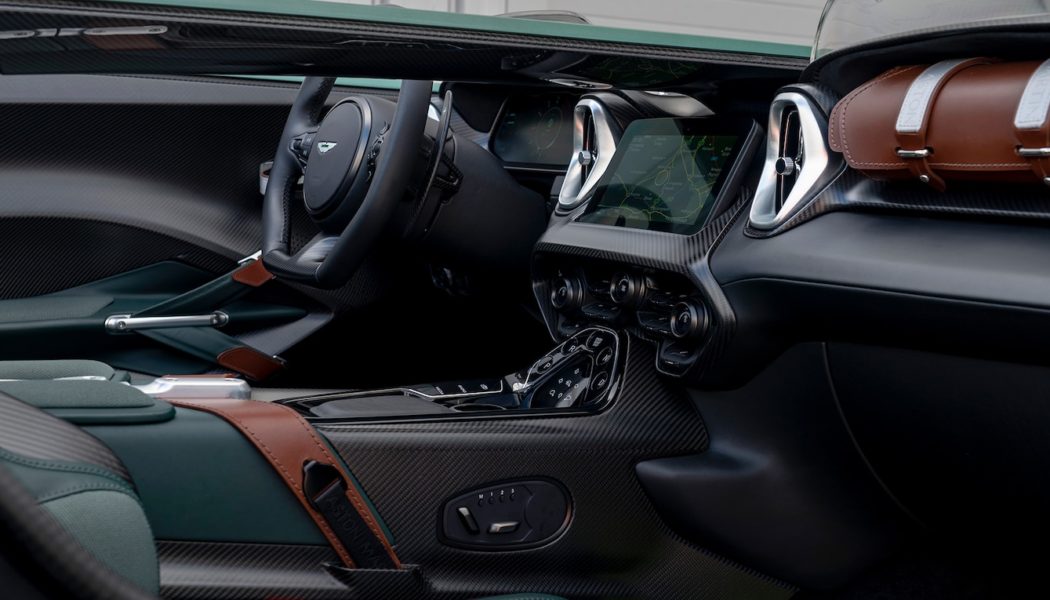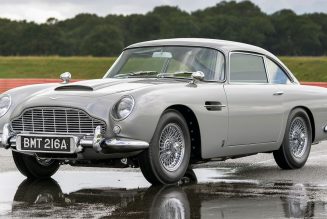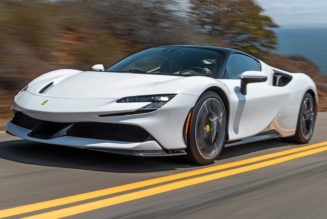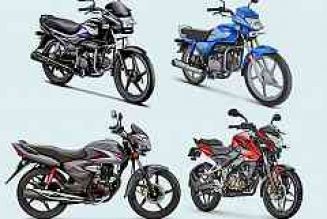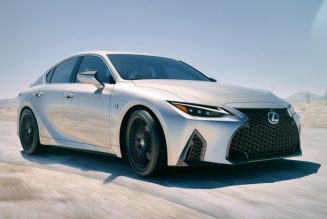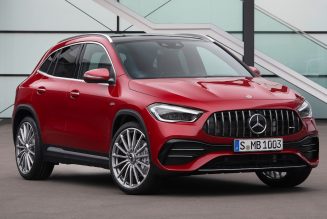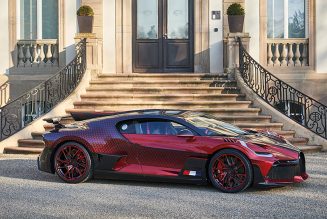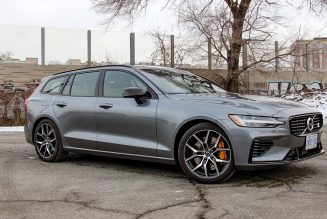The 2022 Aston Martin V12 Speedster costs the equivalent of a million bucks and doesn’t come with a roof. Or even a windshield, for that matter. It’s expensive and impractical and breaks no new ground in terms of its layout, technology, or design. It’s a rich person’s toy, a 12-cylinder, twin-turbo plaything for people with money to burn—a pointless automotive frivolity. And there’s absolutely nothing wrong with that.
Let’s be real, though: With a handful of exceptions like the Ford Model T, Volkswagen Beetle, Citroën 2CV, and the original Mini, among others, the automobile has rarely been simply about rational transport. If it was, we would all drive sensible hatchbacks or multi-function minivans rather than lusting after snarling 600-horsepower performance cars or jacked-up station wagons masquerading as macho off-roaders. So, we ought to cut the 2022 Aston Martin V12 Speedster some slack. This Aston Martin is not meant to change the world; it’s simply meant to be fun.
Inspiration
The 2022 Aston Martin V12 Speedster was inspired by the CC100 Speedster concept the marque unveiled in 2013 to celebrate its centenary. But the “what if?” moment came, says Aston design director Miles Nurnberger, when the Vantage Roadster clay model was being developed. “When you do a clay model of a convertible, it doesn’t have a windshield,” Nurnberger elaborates. “When we saw it, we thought, ‘We ought to do another CC100. ‘” The design team worked up a quarter-size scale model that kicked around the studio for a while, attracting the attention of various engineers and marketers who answered, ‘Why not?'”
The 2022 Aston Martin V12 Speedster deliberately takes a very different approach to the forward-looking designs of the DB11 and Vantage. The V12 Speedster glances back, with nods to historic Aston race cars such as the 1953 DB3S, especially around the car’s mid-section, plus the DBR1, most famously driven by Carroll Shelby and Roy Salvadori to win the 1959 24 Hours of Le Mans. The forms of those classic cars are echoed in the low-slung grille and the streamlined humps behind the seats.
But while the V12 Speedster riffs on the CC100 concept, its surfaces are tauter, its body sections more muscular, and the car is not entirely a look in the rearview mirror: The front graphic is very much contemporary production Aston Martin, and the rear wing with integrated light is a clever nod to the rear end graphics of both the Vantage and the brilliant DBX SUV.
The Hardware
“It’s a bit of a Meccano set,” Aston Martin Special Operations boss David King says of the V12 Speedster’s unique platform, which combines elements of the bonded aluminum structures that underpin the DBS Superleggera and the smaller Vantage. The front subframe and front suspension are from the DBS, the rear of the car is Vantage Roadster. The differential is from the DBS, but the eight-speed automatic transaxle transmission is the smaller and lighter unit from the DB11.
The 2022 Aston Martin V12 Speedster’s franken-structure is the result of desire to package Aston Martin’s 5.2-liter 12-cylinder engine in a Vantage-sized car. “It would have been easy to base the Speedster on the DBS, but that wouldn’t have given us the right proportions,” King says. Design chief Nurnberger says the V-12 engine was a core part of the design brief. “This car has been created to deliver an incredibly visceral experience. That’s why it is a V-12, rather than a V-8.”
Packaging the V-12 not only challenged Aston Martin’s engineers, but Nurnberger’s designers as well. The intake vent at the hood’s leading edge recalls the famous Aston Martin DB4/DB5/DB6 road cars of the ’60s, but it’s not a case of design whimsy. Instead, it cleverly disguises the fact the V-12 engine is longer and taller than the V-8.
Two key lines make this whole construct work: One runs from the top of the rear fender and defines the top of the door before gently converging with its twin on the other side of the car to frame the hood and the intake vent. The other runs from the top of the front fender and into the door, passing behind the rearview-mirror mount before gracefully fading away just to the rear of the door handle. The former helps deliver the 2.75 inches of more height at the front-axle centerline the V-12 demands, while the latter deceives eyes into reading the top of the front fender, not the top of the hood, when looking at the car. The rearview-mirror mount is the magician’s silk in this trick: It’s where the visual switcheroo happens.
On the Inside
It’s only when you sit in the 2022 Aston Martin V12 Speedster that you see what’s really going on. The car envelopes you: The tops of the doors and the spar through the center of the cabin are shoulder high, and the hood’s blank expanse stretches out before you. You can’t see the car’s front corners.
You can see everything else, though: No windshield means no A-pillars and no header to get in the way of the IMAX view down the road. And before you ask, yes, the V12 Speedster is street legal. Well, it is in most countries apart from the U.S., where a windshield is needed to enable our oversized airbags to protect occupants who are too stupid to buckle up when they get in an automobile.
And no windshield really means no windshield: The tiny aero screens on this prototype V12 Speedster are accessories that Aston Martin dealers will sell separately. Aston itself couldn’t put anything there that even remotely looks like a windshield without invoking a swathe of certification rules and regulations. “It’s all, or nothing,” King says.
The V12 Speedster concept that was to have been at Geneva last year had a Top Gun vibe. The car we are about to sample is resolutely retro, its green paint and white roundels echoing the livery of factory Aston Martin race cars in the ’50s. There’s still plenty of modern carbon fiber and plastic and an infotainment screen next to the digital dash. But stout brown leather straps across the center console and on the doors, and what looks like a rolled-up leather satchel in the dash, hint of the good old days. Britain’s spring weather is notoriously changeable, and already ominously dark clouds are bubbling up. None of this stuff looks waterproof …
Drive Time
Coat, hat, and goggles. Especially goggles. Slide behind the familiar, out-of-round Aston Martin steering wheel, adjust the seat, and thumb the start button. The V12 Speedster’s version of the twin-turbo V-12 pumps out 690 hp, 25 horses less than in the DBS Superleggera, but still enough grunt to kick the 3,858-pound barchetta to 60 mph in 3.5 seconds, Aston claims. However, using the smaller and lighter DB11 transmission meant having to cap torque output at 556 lb-ft rather than the 664 the engine pumps out in DBS tune. Top speed is a claimed 186 mph. Carroll Shelby never drove an open-top Aston this powerful, this fast. Even at Le Mans.
Though it has slightly less power and considerably less torque than in the DBS, the Speedster’s V-12 has been massaged to give a smoother, more linear power delivery. New Aston CEO Tobias Moers, whose years spent running Mercedes-AMG mean he’s no stranger to handling seriously fast and powerful cars, reckoned the engine was a little too eager at low revs. It produced a rapid surge of torque that quickly flattened out and made the car tricky to handle on cold roads with all the driver nannies switched off.
There are damp patches all over our test route, so the nannies stay on. It’s a wise decision. The power delivery is indeed smoother through the lower and mid-range, but a few full-throttle runs in Sport mode from low speed in second and third gear reveal that, from 4000 rpm up, Aston’s twin-turbo V-12 is still a monster. The traction control light strobes as the 305/30 21-inch Pirelli PZeros at the rear struggle for grip. The rush of acceleration at the top end is intoxicating and made more intense by the fact there’s nothing between you and the onrushing scenery, the roaring slipstream in your ears almost drowning out the engine’s top-end snarl.
In addition to revised engine mapping, the eight-speed auto has been programmed to deliver smoother upshifts, both in manual and automatic, a welcome break from the trend among certain performance car manufacturers toward adding artificial shift-shock so ignorant owners feel something when they switch into a sportier drive mode. The engine and transmission changes mean the V12 Speedster’s driveline feels fluid and effortless, no matter what drive mode you’re in.
You need the goggles. But even at 100 mph there’s remarkably little wind buffeting in the cockpit; those accessory aero screens flick a lot of the air upward just enough to keep things calm. And though Britain’s back roads heave and swerve all over the place, the Speedster feels surprisingly composed through it all. No, you don’t get the steering precision or the body control you get in the tighter, tauter DBS Superleggera, and the back end can feel a bit lively on corner exit if you’re too ambitious with the throttle. But the V12 Speedster isn’t meant to be an apex predator. It’s meant to be fun.
And it absolutely is. Driven at eight-tenths along a winding road (which in this car still means you’re covering ground at quite a pace) with the engine and suspension in Sport mode, and manually shifting the eight-speed transmission, the 2022 Aston Martin V12 Speedster makes you smile. It works better as a car than you expect, but it doesn’t expect you to take it too seriously.
